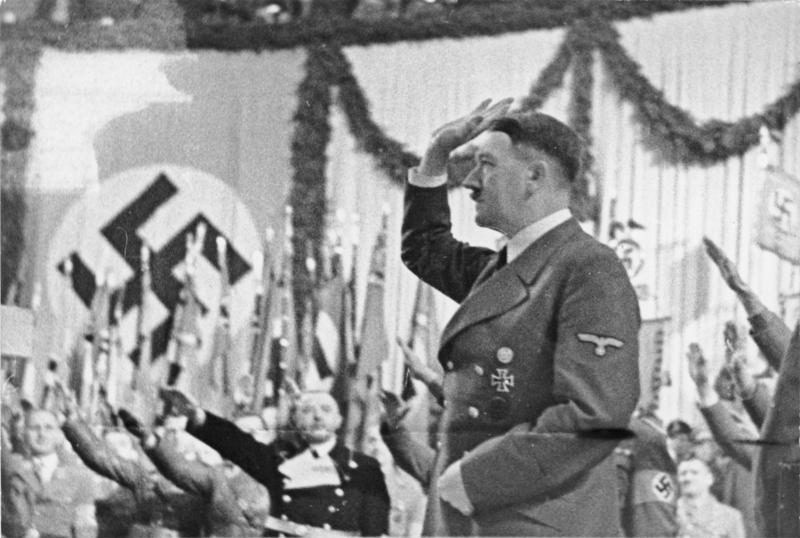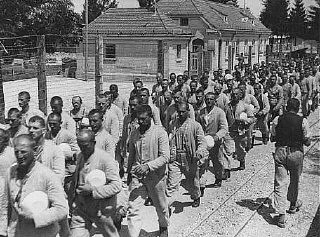Some people were undesirable by Nazi standards because of who they were, their genetic or cultural origins, or health conditions. These included Jews, Gypsies, Poles and other Slavs, and people with physical or mental disabilities. Others were Nazi victims because of what they did. These victims of the Nazi regime included Jehovah’s Witnesses
Secret Hitler speech outlining planned WW2 genocide of Poles genuine, say German historian | Notes From Poland
Microsoft Word – OtherVictims.docx. The Holocaust’s “Other Victims” Overview. In this lesson, students will learn about non-Jewish victims of the Holocaust, also targeted for being “different” in some way. Students will work in groups to read excerpts from The Other Victims: First-Person Stories of Non-Jews Persecuted by the Nazis
Source Image: sarahebond.medium.com
Download Image
Learn about and revise what life was like in Nazi Germany between 1933 and 1939 with this BBC Bitesize History (Edexcel) study guide.

Source Image: brenebrown.com
Download Image
Hitler Photos and Images | Shutterstock The Nazis used the terms ‘asocial’ and ‘workshy’ to categorise together a group of people who did not conform to their social norms. This group included beggars, alcoholics, drug addicts, prostitutes, and pacifists (people who believe war is unjustified). People who were categorised as ‘asocials’ were persecuted and some were taken

Source Image: pbs.org
Download Image
What Groups Of People Did Hitler Consider Undesirable
The Nazis used the terms ‘asocial’ and ‘workshy’ to categorise together a group of people who did not conform to their social norms. This group included beggars, alcoholics, drug addicts, prostitutes, and pacifists (people who believe war is unjustified). People who were categorised as ‘asocials’ were persecuted and some were taken In June 1940, they moved on to the Baltic States—Lithuania, Latvia, and Estonia. From the start, Hitler made no secret of how he felt about the people of Poland. He considered Poles, the ethnic majority in Poland, to be “sub-human.”. Alfred Rosenberg, a leading proponent of Nazi ideology, summed up a conversation he had with Hitler in a
Trump begins openly embracing and amplifying false fringe QAnon conspiracy theory | PBS NewsHour
Third Reich Language English The Holocaust The Holocaust is an event central to our understanding of western civilization, the nation state, modern bureaucratic society, and human nature. It was the premeditated mass murder of millions of innocent civilians. Conseil de l’Europe – brochure A4 portrait
Source Image: rm.coe.int
Download Image
80 Years After Hitler’s ‘Degenerate Art’ Show, Two German Museums Confront Its Dark Legacy Third Reich Language English The Holocaust The Holocaust is an event central to our understanding of western civilization, the nation state, modern bureaucratic society, and human nature. It was the premeditated mass murder of millions of innocent civilians.

Source Image: news.artnet.com
Download Image
Secret Hitler speech outlining planned WW2 genocide of Poles genuine, say German historian | Notes From Poland Some people were undesirable by Nazi standards because of who they were, their genetic or cultural origins, or health conditions. These included Jews, Gypsies, Poles and other Slavs, and people with physical or mental disabilities. Others were Nazi victims because of what they did. These victims of the Nazi regime included Jehovah’s Witnesses

Source Image: notesfrompoland.com
Download Image
Hitler Photos and Images | Shutterstock Learn about and revise what life was like in Nazi Germany between 1933 and 1939 with this BBC Bitesize History (Edexcel) study guide.

Source Image: shutterstock.com
Download Image
Who Said It, Adolf Hitler or Taylor Swift? – The Atlantic Who were the Victims? The Nazi regime persecuted different groups on ideological grounds. Jews were the primary targets for systematic persecution and mass murder by the Nazis and their collaborators. Nazi policies also led to the brutalization and persecution of millions of others.

Source Image: theatlantic.com
Download Image
Enemies of the State” | Holocaust Encyclopedia The Nazis used the terms ‘asocial’ and ‘workshy’ to categorise together a group of people who did not conform to their social norms. This group included beggars, alcoholics, drug addicts, prostitutes, and pacifists (people who believe war is unjustified). People who were categorised as ‘asocials’ were persecuted and some were taken

Source Image: encyclopedia.ushmm.org
Download Image
The Trojan Horse Affair Podcast – The New York Times In June 1940, they moved on to the Baltic States—Lithuania, Latvia, and Estonia. From the start, Hitler made no secret of how he felt about the people of Poland. He considered Poles, the ethnic majority in Poland, to be “sub-human.”. Alfred Rosenberg, a leading proponent of Nazi ideology, summed up a conversation he had with Hitler in a

Source Image: nytimes.com
Download Image
80 Years After Hitler’s ‘Degenerate Art’ Show, Two German Museums Confront Its Dark Legacy
The Trojan Horse Affair Podcast – The New York Times Microsoft Word – OtherVictims.docx. The Holocaust’s “Other Victims” Overview. In this lesson, students will learn about non-Jewish victims of the Holocaust, also targeted for being “different” in some way. Students will work in groups to read excerpts from The Other Victims: First-Person Stories of Non-Jews Persecuted by the Nazis
Hitler Photos and Images | Shutterstock Enemies of the State” | Holocaust Encyclopedia Who were the Victims? The Nazi regime persecuted different groups on ideological grounds. Jews were the primary targets for systematic persecution and mass murder by the Nazis and their collaborators. Nazi policies also led to the brutalization and persecution of millions of others.